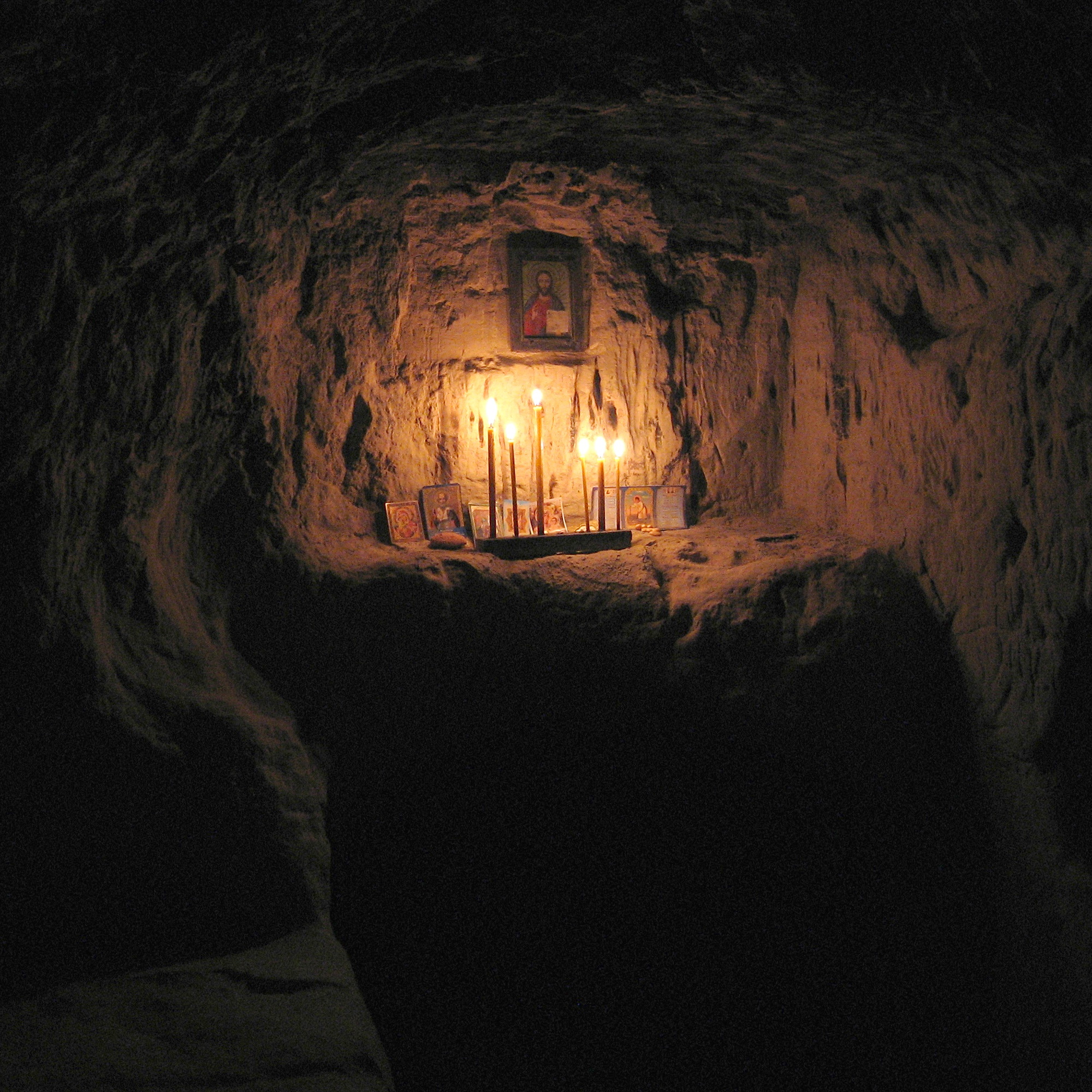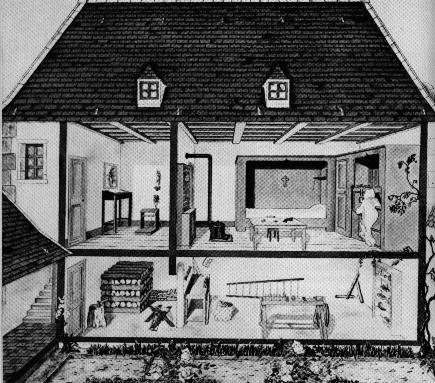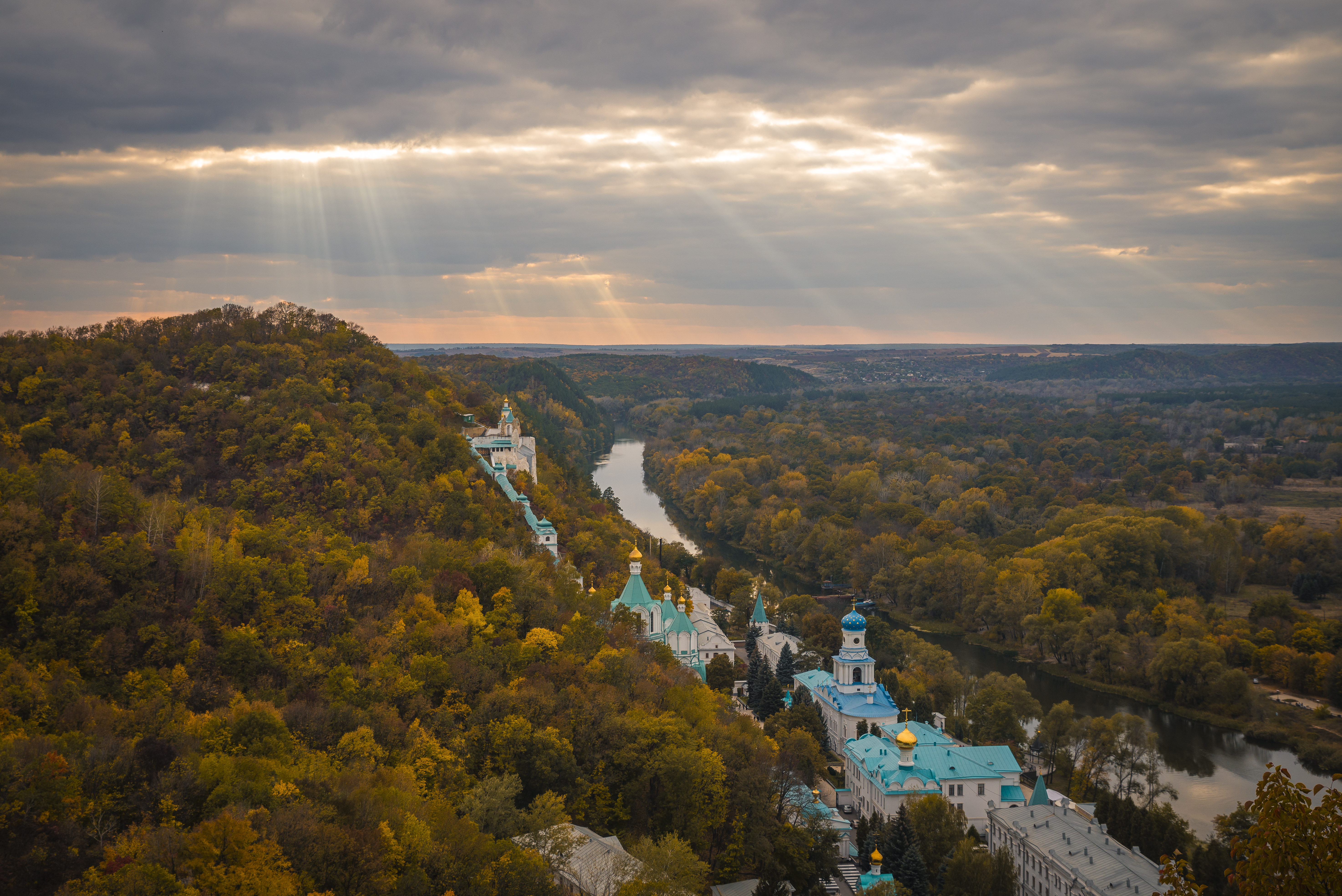|
Enaton
The Enaton (or Ennaton, Hennaton) was a monastic district in Egypt during the Middle Ages. It lasted into the 15th century, but it was at its height between the 5th and 7th centuries. It takes its name, which means "ninth" (Greek ·ºîŒΩŒ±œÑŒøŒΩ), from its location at the ninth milestone southwest of Alexandria along the coastal road. The Enaton was composed of distinct monasteries and cells which elected a common hegumen (leader). Theologically, the Enaton was Miaphysite. In its heyday, the district was international in character, comprising both Copts and Syriacs. It was a waystation (Roman ''mutatio'') for travellers from Alexandria to the monasteries of the Nitrian Desert and the monastery of Saint Mina. It probably served as an inn or hostel for pilgrims, tourists, merchants and their animals. Names In Arabic, the Enaton became known as the ''Dayr al-Zujaj'' (Monastery of Glass) or ''Dayr al-Zajjaj'' (Monastery of the Glass Maker), terms that derive from Coptic ‚≤°‚≤ì‚≤ô‚≤ü‚≤õ‚ ... [...More Info...] [...Related Items...] OR: [Wikipedia] [Google] [Baidu] |
Pempton
The Pempton (Greek language, Greek τὸ πέμπτον, "the fifth") was a complex of Christian monasteries in late Roman Egypt. It was named for the fifth milestone west of Alexandria along the coastal road between Lake Mareotis and the Mediterranean Sea, probably near present-day El Max, Alexandria, al-Maks. It is attested from the early fourth century until the beginning of the seventh. It was one of a series of monastic sites along the coast west of Alexandria, others being the ninth (Enaton), eighteenth (Oktokaidekaton) and twentieth (Eikoston). The region around the Pempton was called the Eremika, "desert" in Greek. In 338, Palladius of Galatia went to live as a hermit there under the spiritual direction of a certain Dorotheos of Thebes, Egypt, Thebes, who had been living in a cave there for sixty years. He had built cells for the other brothers living the region. According to Sozomen and Nikephoros Kallistos Xanthopoulos, Xanthopoulos, writing at some distance, there were ar ... [...More Info...] [...Related Items...] OR: [Wikipedia] [Google] [Baidu] |
Eikoston
The Eikoston (Greek Εἰκοστόν, "twentieth") was a Christian monastic complex in Roman Egypt between the 5th and 7th centuries. It was located at the twentieth milestone west of Alexandria along the coastal road between Lake Mareotis and the Mediterranean Sea. It was one of a series of monastic sites along the coast west of Alexandria, others being found at the fifth (Pempton), ninth (Enaton) and eighteenth ( Oktokaidekaton) milestones. The exact location of the Eikoston has not been determined. In 457, the Miaphysite monks of the Eikoston took part in the election of Timothy Aelurus as a rival patriarch of Alexandria. Timothy was a former monk of the Eikoston. In the early 7th century, John Moschus and Sophronius the Sophist visited the '' laura'' (community of hermits) of Kalamon (al-Qalamun) located at the Eikoston. There they visited with a holy man called Abba Theodorus. Two miles west of the Eikoston, according to Moschus' ''Spiritual Meadow'', was a place called Ma ... [...More Info...] [...Related Items...] OR: [Wikipedia] [Google] [Baidu] |
Egypt
Egypt ( ar, مصر , ), officially the Arab Republic of Egypt, is a transcontinental country spanning the northeast corner of Africa and southwest corner of Asia via a land bridge formed by the Sinai Peninsula. It is bordered by the Mediterranean Sea to the north, the Gaza Strip of Palestine and Israel to the northeast, the Red Sea to the east, Sudan to the south, and Libya to the west. The Gulf of Aqaba in the northeast separates Egypt from Jordan and Saudi Arabia. Cairo is the capital and largest city of Egypt, while Alexandria, the second-largest city, is an important industrial and tourist hub at the Mediterranean coast. At approximately 100 million inhabitants, Egypt is the 14th-most populated country in the world. Egypt has one of the longest histories of any country, tracing its heritage along the Nile Delta back to the 6th–4th millennia BCE. Considered a cradle of civilisation, Ancient Egypt saw some of the earliest developments of writing, agriculture, ur ... [...More Info...] [...Related Items...] OR: [Wikipedia] [Google] [Baidu] |
Lake Mareotis
Lake Mariout ( ar, بحيرة مريوط ', , also spelled Maryut or Mariut), is a brackish lake in northern Egypt near the city of Alexandria. The lake area covered and had a navigable canal at the beginning of the 20th century, but at the beginning of the 21st century, it covers only about . Etymology The name of Lake Mariout derives from the Hellenized name of Mareotis ( grc, Μαρεῶτις) or Marea, which was named in the Ptolemic Period. Overview In antiquity, the lake was much larger than it is now, extending further to the south and west and occupying around . It had no mouth connecting it to the Mediterranean, being fed with Nile water via a number of canals. By the twelfth century the lake had dwindled to a collection of salt lakes and salt flats and it had dried up by the Late Middle Ages. At least 250 years ago, the lake was fresh water, and much of it would dry up during the period just before the Nile flooded again. A storm in 1770 breached the sea wall ... [...More Info...] [...Related Items...] OR: [Wikipedia] [Google] [Baidu] |
Koinobion
Cenobitic (or coenobitic) monasticism is a monastic tradition that stresses community life. Often in the West the community belongs to a religious order, and the life of the cenobitic monk is regulated by a religious rule, a collection of precepts. The older style of monasticism, to live as a hermit, is called eremitic. A third form of monasticism, found primarily in Eastern Christianity, is the skete. The English words "cenobite" and "cenobitic" are derived, via Latin, from the Greek words ''koinos'' (κοινός), "common", and ''bios'' (βίος), "life". The adjective can also be cenobiac (κοινοβιακός, ''koinobiakos'') or cœnobitic (obsolete). A group of monks living in community is often referred to as a cenobium. Cenobitic monasticism appears in several religious traditions, though most commonly in Buddhism and Christianity. Origins The word ''cenobites'' was initially applied to the followers of Pythagoras in Crotona, Italy, who founded a commune not ju ... [...More Info...] [...Related Items...] OR: [Wikipedia] [Google] [Baidu] |
Monastery
A monastery is a building or complex of buildings comprising the domestic quarters and workplaces of monastics, monks or nuns, whether living in communities or alone (hermits). A monastery generally includes a place reserved for prayer which may be a chapel, church, or temple, and may also serve as an oratory, or in the case of communities anything from a single building housing only one senior and two or three junior monks or nuns, to vast complexes and estates housing tens or hundreds. A monastery complex typically comprises a number of buildings which include a church, dormitory, cloister, refectory, library, balneary and infirmary, and outlying granges. Depending on the location, the monastic order and the occupation of its inhabitants, the complex may also include a wide range of buildings that facilitate self-sufficiency and service to the community. These may include a hospice, a school, and a range of agricultural and manufacturing buildings such as a barn, a fo ... [...More Info...] [...Related Items...] OR: [Wikipedia] [Google] [Baidu] |
List Of Cave Monasteries
A cave monastery is a monastery built in caves, with possible outside facilities. The 3rd-century monk St. Antony the Great, known as the founder of monasticism, lived in a cave. *Albania ** Qafthanë Cave Church, cave church near Urakë ** St. Mary's Church, cave church in Maligrad, an island in the Prespa lake *Armenia **Geghard cave monastery/fortress *Bulgaria **Aladzha Monastery **Albotin Monastery ** Basarbovo Monastery ** Rock-hewn Churches of Ivanovo **Cave monasteries of Krepcha **Monasteries of Provadia **Cave monasteries on the Plateau of Shumen **Cave monasteries of Tervel *Ethiopia **Monolithic church *France **Abbey of Saint-Roman, Beaucaire, Gard * ... [...More Info...] [...Related Items...] OR: [Wikipedia] [Google] [Baidu] |
Hermitage (religious Retreat)
A hermitage most authentically refers to a place where a hermit lives in seclusion from the world, or a building or settlement where a person or a group of people lived religiously, in seclusion. Particularly as a name or part of the name of properties its meaning is often imprecise, harking to a distant period of local history, components of the building material, or recalling any former sanctuary or holy place. Secondary churches or establishments run from a monastery were often called "hermitages". In the 18th century, some owners of English country houses adorned their gardens with a "hermitage", sometimes a Gothic ruin, but sometimes, as at Painshill Park, a romantic hut which a "hermit" was recruited to occupy. The so-called Ermita de San Pelayo y San Isidoro is the ruins of a Romanesque church of Ávila, Spain that ended up several hundred miles away, to feature in the Buen Retiro Park in Madrid. Western Christian tradition A hermitage is any type of domestic dwelli ... [...More Info...] [...Related Items...] OR: [Wikipedia] [Google] [Baidu] |
Monastic Cell
A cell is a small room used by a hermit, monk, nun or anchorite to live and as a devotional space. Cells are often part of larger cenobitic monastic communities such as Catholic and Orthodox monasteries and Buddhist vihara, but may also form stand-alone structures in remote locations. The word ''cell'' comes from the Old French ''celle'' meaning a monastic cell, itself from the Latin meaning "room", "store room" or "chamber". In Christianity Usually, a cell is small and contains a minimum of furnishings. It may be an individual living space in a building or a hermit's primitive solitary living space, possibly a cave or hut in a remote location. A small dependent or daughter house of a major monastery, sometimes housing just one or two monks or nuns, may also be termed a cell. The first cells were in the Nitrian Desert in Egypt following the ministry of Paul of Thebes, Serapion, and Anthony the Great.Chryssavgis, John; Ware, Kallistos; Ward, Benedicta, ''In the Heart of the Des ... [...More Info...] [...Related Items...] OR: [Wikipedia] [Google] [Baidu] |
Lavra
A lavra or laura ( el, Λαύρα; Cyrillic: Ла́вра) is a type of monastery consisting of a cluster of cells or caves for hermits, with a church and sometimes a refectory at the center. It is erected within the Orthodox and other Eastern Christian traditions. The term is also used by some Roman Catholic communities. The term in Greek initially meant a narrow lane or an alley in a city.. History Byzantine laura/lavra From the fifth century the Greek term ''laura'' could refer specifically to the semi-eremitical monastic settlements of the Judaean Desert, where lauras were very numerous. The first lauras of Palestine were founded by Chariton the Confessor (born 3rd century, died ca. 350): the Laura of Pharan (now Wadi Qelt) northeast of Jerusalem, the Laura of Douka on the Mount of Temptation west of Jericho, and Souka Laura or Old Laura in the area of Tuqu' in Wadi Khureitun. Saint Euthymius the Great (377–473) founded one of the early lauras in fifth-century Palestine. The ... [...More Info...] [...Related Items...] OR: [Wikipedia] [Google] [Baidu] |
Scetis
Wadi El Natrun (Arabic: "Valley of Natron"; Coptic: , "measure of the hearts") is a depression in northern Egypt that is located below sea level and below the Nile River level. The valley contains several alkaline lakes, natron-rich salt deposits, salt marshes and freshwater marshes. In Christian literature it is usually known as Scetis ( in Hellenistic Greek) or Skete (, plural in ecclesiastical Greek). It is one of the three early Christian monastic centers located in the Nitrian Desert of the northwestern Nile Delta. The other two monastic centers are Nitria and Kellia. Scetis, now called Wadi El Natrun, is best known today because its ancient monasteries remain in use, unlike Nitria and Kellia which have only archaeological remains. The desertified valley around Scetis in particular may be called the Desert of Scetis.. Fossil discoveries The area is one of the best known sites containing large numbers of fossils of large pre-historic animals in Egypt, and was known ... [...More Info...] [...Related Items...] OR: [Wikipedia] [Google] [Baidu] |
Zeno (emperor)
Zeno (; grc-gre, Ζήνων, Zénōn; c. 425 – 9 April 491) was Eastern Roman emperor from 474 to 475 and again from 476 to 491. Domestic revolts and religious dissension plagued his reign, which nevertheless succeeded to some extent in foreign issues. His reign saw the end of the Western Roman Empire following the deposition of Romulus Augustus and the death of Julius Nepos, but he was credited with contributing much to stabilising the Eastern Empire. In ecclesiastical history, Zeno is associated with the '' Henotikon'' or "instrument of union", promulgated by him and signed by all the Eastern bishops, with the design of solving the monophysite controversy. The Henotikon was widely unpopular and eventually abandoned under Justin I. Biography Rise to power Early life Zeno's original name was Tarasis, and more accurately ''Tarasikodissa'' in his native Isaurian language ( la, Trascalissaeus).The sources call him "Tarasicodissa Rousombladadiotes", and for this reason ... [...More Info...] [...Related Items...] OR: [Wikipedia] [Google] [Baidu] |







